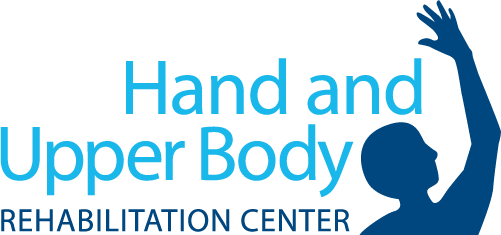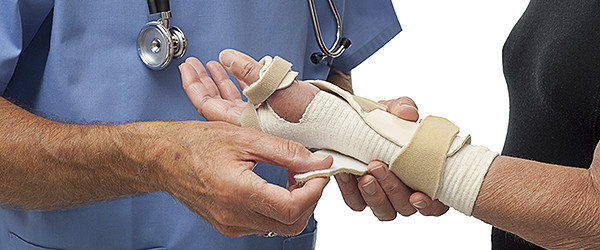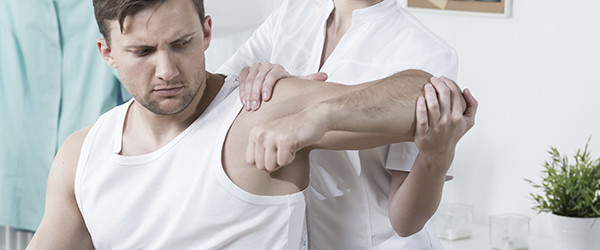Frequent Questions
What Do Therapists Do?
Your Therapist at the Hand and Upper Body Rehabilitation Center can:
- Evaluate and treat your injury or problem in the upper extremity and spine.
- Provide treatment for pain relief.
- Increase your strength and improve your motion.
- Provide post-operative rehabilitation.
- Provide work related consultations.
- Develop individualized programs and education to prevent other injuries.
Your care is coordinated with your physician or surgeon, and goals are developed with your input. This begins with your initial consultation, often immediately after surgery or injury, right through return to work, sport, or your productive lifestyle.
What is a Certified Hand Therapist?
All therapists at the Hand and Upper Body Rehabilitation Center are board certified hand therapists (CHT). A CHT is an Occupational or Physical Therapist who has a minimum of five years of clinical experience, including 4,000 hours of direct practice in upper extremity and hand therapy. Your CHT has passed a comprehensive national test of advanced clinical skills in evaluating and treating the upper extremity, and must recertify every five years by demonstrating competency and professional development.
What does a Hand Therapist provide?
Treatment may include:
- Management of acute or chronic pain
- Desensitization or sensory reeducation following nerve injury
- Education in an exercise program to increase motion, strength, or dexterity
- Orthotic (“splint”) fabrication for prevention or correction of injury, or protection after surgery
- Training in the performance of activities of daily living through task-modification, use of adaptive equipment, posture and body mechanics, and ergonomics
- Conditioning prior to returning to work
Post-operative rehabilitation may include management of wounds, education in the prevention of infection and assistance in healing, control of swelling, and control of raised or swollen or sensitive scars. Fabrication of orthotics (“splints”), a progressive exercise program, and education in returning to activities may also be part of your treatment plan.
Do you only treat the upper body?
At the Hand and Upper Body Rehabilitation Center we specialize in upper extremity therapy. While we will treat minor back or leg injuries, our center is specifically designed for treatment of the upper body. We will be happy to refer you to another therapist in the area for the specialized needs of the hip, leg and ankle.
Is therapy painful?
For many patients, pain relief is the primary goal of therapy. Modalities such as heat, ice, ultrasound and electrical stimulation, along with “hands-on” therapy, can help relieve pain symptoms. Although the saying “No pain, no gain” is used in society, it is typically not true in therapy. However, it may be common to develop some mild soreness after working muscles that are weak due to injury or immobilization. You may experience “stretch” discomfort after exercising tight muscles or joints; however, this type of soreness should go away within a day. It is important to listen to your body’s signals and pain responses, and discuss how you feel during and after your therapy session with your therapist.
Can my therapist provide me with a diagnosis?
Yes. Therapists make a rehabilitation diagnosis based on your signs and symptoms, and measurements from your examination and evaluation. This helps to guide your treatment, and your therapist will coordinate your care with your physician’s medical diagnosis to provide you with a personalized treatment plan. Hand therapists work closely with your physician or surgeon, your case manager, and at times, even your employer, to help you return to your optimum level of activity.
What should I expect on my first visit?
On your first visit, your therapist will listen to the history of your problem and your symptoms, and then evaluate and examine your muscles, joints, nerves, and ligaments. Posture, range of motion, strength, and sensation may be measured, and you will answer questions or surveys about your function or activities. Your therapist will discuss with you your treatment plan and goals, and an individualized treatment plan will be formed, aimed at accomplishing your personal goals to help you return to your daily activities. You may also be fitted with an orthotic (“splint”). The first session usually takes about an hour, and your therapist will discuss with you the importance of your home exercise program and activities that you will need to perform on your own in order to achieve your goals as soon as possible.
Do I need a referral or prescription for therapy from a doctor?
In Pennsylvania, physical therapists who have a “Direct Access” license can evaluate and treat musculoskeletal problems without a referral. Many insurance companies recognize Direct Access and provide payment for your therapy. Click here for more information about Direct Access, or talk to our knowledgeable office staff to find out if you are covered.
What is a Private Practice?
A Private Practice is an outpatient therapy clinic that is independently owned and operated. Our mission is to provide a caring and professional therapist owned private practice focused on providing specialized, effective, outcome oriented service that exceeds patient’s expectations and improves patient’s quality of life.
Other Frequent Questions:
- What Do Therapists Do?
- What is a Certified Hand Therapist?
- What does a Hand Therapist provide?
- Do you only treat the upper body?
- Is therapy painful?
- Can my therapist provide me with a diagnosis?
- What should I expect on my first visit?
- Do I need a referral or prescription for therapy from a doctor?
- What are your billing and payment policies?
- What are my rights and responsibilities as a patient?
- What is your Privacy Policy? (PDF)




